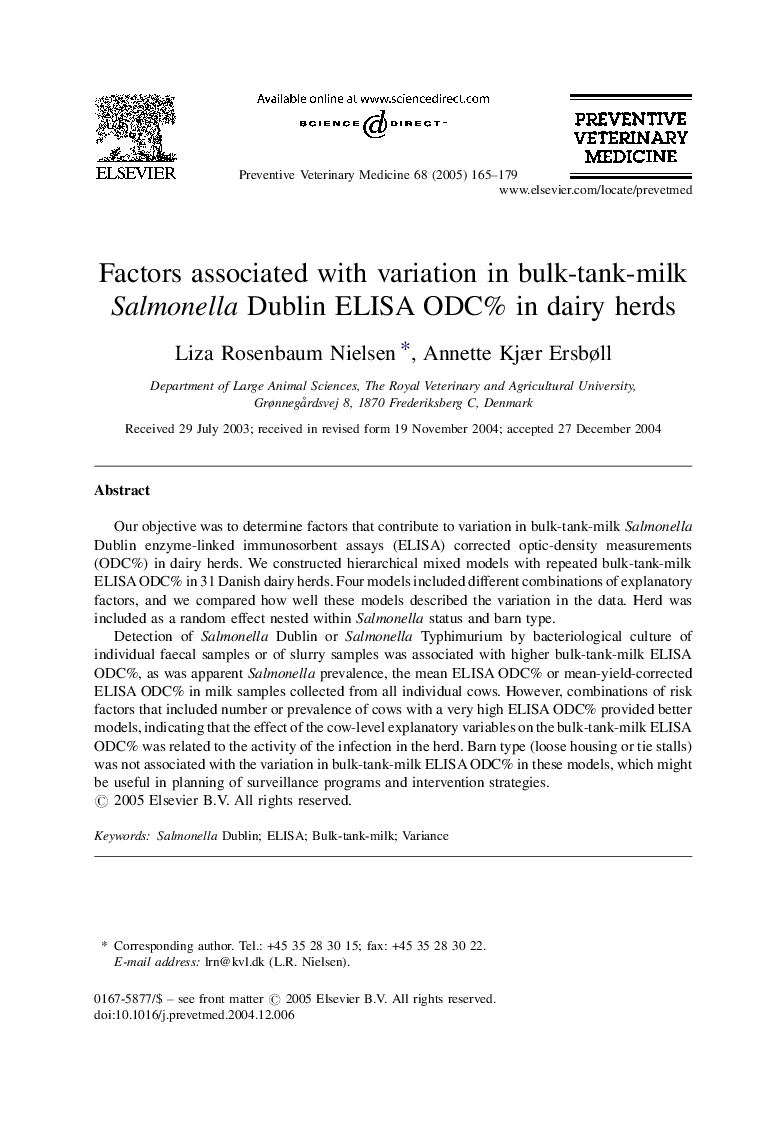| Article ID | Journal | Published Year | Pages | File Type |
|---|---|---|---|---|
| 8985037 | Preventive Veterinary Medicine | 2005 | 15 Pages |
Abstract
Detection of Salmonella Dublin or Salmonella Typhimurium by bacteriological culture of individual faecal samples or of slurry samples was associated with higher bulk-tank-milk ELISA ODC%, as was apparent Salmonella prevalence, the mean ELISA ODC% or mean-yield-corrected ELISA ODC% in milk samples collected from all individual cows. However, combinations of risk factors that included number or prevalence of cows with a very high ELISA ODC% provided better models, indicating that the effect of the cow-level explanatory variables on the bulk-tank-milk ELISA ODC% was related to the activity of the infection in the herd. Barn type (loose housing or tie stalls) was not associated with the variation in bulk-tank-milk ELISA ODC% in these models, which might be useful in planning of surveillance programs and intervention strategies.
Keywords
Related Topics
Life Sciences
Agricultural and Biological Sciences
Animal Science and Zoology
Authors
Liza Rosenbaum Nielsen, Annette Kjær Ersbøll,
